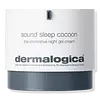What's inside
What's inside
 Key Ingredients
Key Ingredients

 Benefits
Benefits

 Concerns
Concerns

 Ingredients Side-by-side
Ingredients Side-by-side

Water
Skin ConditioningGlycerin
HumectantPropanediol
SolventCetearyl Olivate
Sorbitan Olivate
EmulsifyingC15-19 Alkane
SolventIsopropyl Myristate
EmollientNiacinamide
SmoothingCetyl Alcohol
EmollientAmmonium Acryloyldimethyltaurate/Vp Copolymer
Cetearyl Alcohol
EmollientDicaprylyl Carbonate
EmollientSqualane
EmollientPhenoxyethanol
PreservativeEthylhexylglycerin
Skin ConditioningBeta-Glucan
Skin ConditioningPanthenol
Skin ConditioningAllantoin
Skin ConditioningRetinol
Skin ConditioningPolysorbate 20
EmulsifyingBHA
AntioxidantBHT
AntioxidantDisodium EDTA
Betaine
HumectantLinoleic Acid
CleansingLinolenic Acid
CleansingPisum Sativum Extract
Skin ConditioningWater, Glycerin, Propanediol, Cetearyl Olivate, Sorbitan Olivate, C15-19 Alkane, Isopropyl Myristate, Niacinamide, Cetyl Alcohol, Ammonium Acryloyldimethyltaurate/Vp Copolymer, Cetearyl Alcohol, Dicaprylyl Carbonate, Squalane, Phenoxyethanol, Ethylhexylglycerin, Beta-Glucan, Panthenol, Allantoin, Retinol, Polysorbate 20, BHA, BHT, Disodium EDTA, Betaine, Linoleic Acid, Linolenic Acid, Pisum Sativum Extract
Water
Skin ConditioningDimethicone
EmollientGlycerin
HumectantPropanediol
SolventPolymethylsilsesquioxane
Albizia Julibrissin Bark Extract
MaskingDimethicone/PEG-10/15 Crosspolymer
Sodium Chloride
MaskingEvodia Rutaecarpa Fruit Extract
Skin ConditioningLavandula Hybrida Abrial Herb Oil
PerfumingTocopheryl Acetate
AntioxidantTerminalia Ferdinandiana Fruit Extract
AntioxidantCaprylhydroxamic Acid
Trisodium Ethylenediamine Disuccinate
Tamarindus Indica Seed Polysaccharide
Skin ConditioningDipropylene Glycol
HumectantLavandula Angustifolia Flower Extract
CleansingEthylhexylglycerin
Skin ConditioningFusanus Spicatus Wood Oil
MaskingPogostemon Cablin Leaf Oil
MaskingSodium Citrate
BufferingPEG-10 Dimethicone
Skin ConditioningHexanediol
SolventPolyurethane Crosspolymer-1
Limonene
PerfumingTocopherol
AntioxidantCitric Acid
BufferingLinalool
PerfumingPhenoxyethanol
PreservativeWater, Dimethicone, Glycerin, Propanediol, Polymethylsilsesquioxane, Albizia Julibrissin Bark Extract, Dimethicone/PEG-10/15 Crosspolymer, Sodium Chloride, Evodia Rutaecarpa Fruit Extract, Lavandula Hybrida Abrial Herb Oil, Tocopheryl Acetate, Terminalia Ferdinandiana Fruit Extract, Caprylhydroxamic Acid, Trisodium Ethylenediamine Disuccinate, Tamarindus Indica Seed Polysaccharide, Dipropylene Glycol, Lavandula Angustifolia Flower Extract, Ethylhexylglycerin, Fusanus Spicatus Wood Oil, Pogostemon Cablin Leaf Oil, Sodium Citrate, PEG-10 Dimethicone, Hexanediol, Polyurethane Crosspolymer-1, Limonene, Tocopherol, Citric Acid, Linalool, Phenoxyethanol
 Reviews
Reviews

Alternatives
Ingredients Explained
These ingredients are found in both products.
Ingredients higher up in an ingredient list are typically present in a larger amount.
Ethylhexylglycerin (we can't pronounce this either) is commonly used as a preservative and skin softener. It is derived from glyceryl.
You might see Ethylhexylglycerin often paired with other preservatives such as phenoxyethanol. Ethylhexylglycerin has been found to increase the effectiveness of these other preservatives.
Glycerin is already naturally found in your skin. It helps moisturize and protect your skin.
A study from 2016 found glycerin to be more effective as a humectant than AHAs and hyaluronic acid.
As a humectant, it helps the skin stay hydrated by pulling moisture to your skin. The low molecular weight of glycerin allows it to pull moisture into the deeper layers of your skin.
Hydrated skin improves your skin barrier; Your skin barrier helps protect against irritants and bacteria.
Glycerin has also been found to have antimicrobial and antiviral properties. Due to these properties, glycerin is often used in wound and burn treatments.
In cosmetics, glycerin is usually derived from plants such as soybean or palm. However, it can also be sourced from animals, such as tallow or animal fat.
This ingredient is organic, colorless, odorless, and non-toxic.
Glycerin is the name for this ingredient in American English. British English uses Glycerol/Glycerine.
Learn more about GlycerinPhenoxyethanol is a preservative that has germicide, antimicrobial, and aromatic properties. Studies show that phenoxyethanol can prevent microbial growth. By itself, it has a scent that is similar to that of a rose.
It's often used in formulations along with Caprylyl Glycol to preserve the shelf life of products.
Propanediol is an all-star ingredient. It softens, hydrates, and smooths the skin.
It’s often used to:
Propanediol is not likely to cause sensitivity and considered safe to use. It is derived from corn or petroleum with a clear color and no scent.
Learn more about PropanediolWater. It's the most common cosmetic ingredient of all. You'll usually see it at the top of ingredient lists, meaning that it makes up the largest part of the product.
So why is it so popular? Water most often acts as a solvent - this means that it helps dissolve other ingredients into the formulation.
You'll also recognize water as that liquid we all need to stay alive. If you see this, drink a glass of water. Stay hydrated!
Learn more about Water